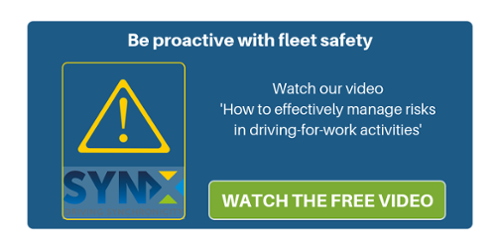
The ETSC (European Transport Safety Council) has recently issued a new report focussing on the role of fleet telematics in the improvement of risk assessment for companies whose commercial activity depends on vehicles. The study, entitled “Using Telematics In Professional Vehicle Fleets” was published October, 2018 and focusses on the positive role of this technology for companies dependent on vehicles.
According to numbers published by the ETSC, more than 25,000 people lost their lives during the whole of 2017 on European roads and around 135,000 suffered injuries deriving from collisions. All in all, it has been estimated that around 40% of the people involved in those accidents were driving for work: 40% of the fatal collisions were in fact work-related.
Governments have taken different measures towards safer roads, adapting their legislation and helping road safety organisations to implement new schemes and programmes with the common aim of reducing those numbers. In this environment, the use of fleet telematics as systems able to capture vehicle data is no longer seen as a tool providing evidence only in the event of a collision, because of its ability to reconstruct what happened leading up to it, but is increasingly being used to monitor driver behaviour. Telematics offers a wide array of data that can potentially be used not only as a risk management tool, but also to identify fleet-wide issues or to improve the sales side of a business.
According to the ETSC, this powerful tool can minimise risks within a fleet by adopting different types of approaches:
- Some road safety issues can in fact be global, such as speeding, which has an impact on both professional drivers and any other road user.
- Then there are driver-specific issues that relate to a particular member of staff and can be monitored in real time. Strengths, weaknesses and areas of concern can be worked on for all drivers, and the publication makes the specific example of drivers particularly prone to speeding or less than perfect driving which might be attributed to poor eyesight.
- Finally, some issues highlighted within the fleet might actually be related to the wider company and help with the organisation of business practices through policies or the implementation of superior processes; for example, in the loading and unloading of vehicles, the prevention of idling and fatigue and in order to identify risky patterns.
To make the best use of telematics data, the ETSC publication offers a number of suggestions:
- Collecting data should be carried out correctly and regularly. The data obtained thanks to the technology available might be converted into a more relevant format for drivers, and such collections should be done on a regular basis over a reasonable length of time so as to fully realise the benefits of the system. The continuous collection of data and its analysis will not only help implement positive improvements but also assess behaviours and eventually modify them if inappropriate.
- It is important to have a risk assessment programme that focusses on the most important issues and that does not let the benefits go due to the abundance of data available.
- Regarding data protection, it is important that the implementation of telematics follows the legal guidelines of the country where it is implemented and pays special attention to the drivers. Staff need to be informed about the data collected, the potential use of it and should be in a position to discuss this usage.
- It is fundamental that everyone in the business is involved in the telematics process and shares joint responsibility for its success, as a team.



